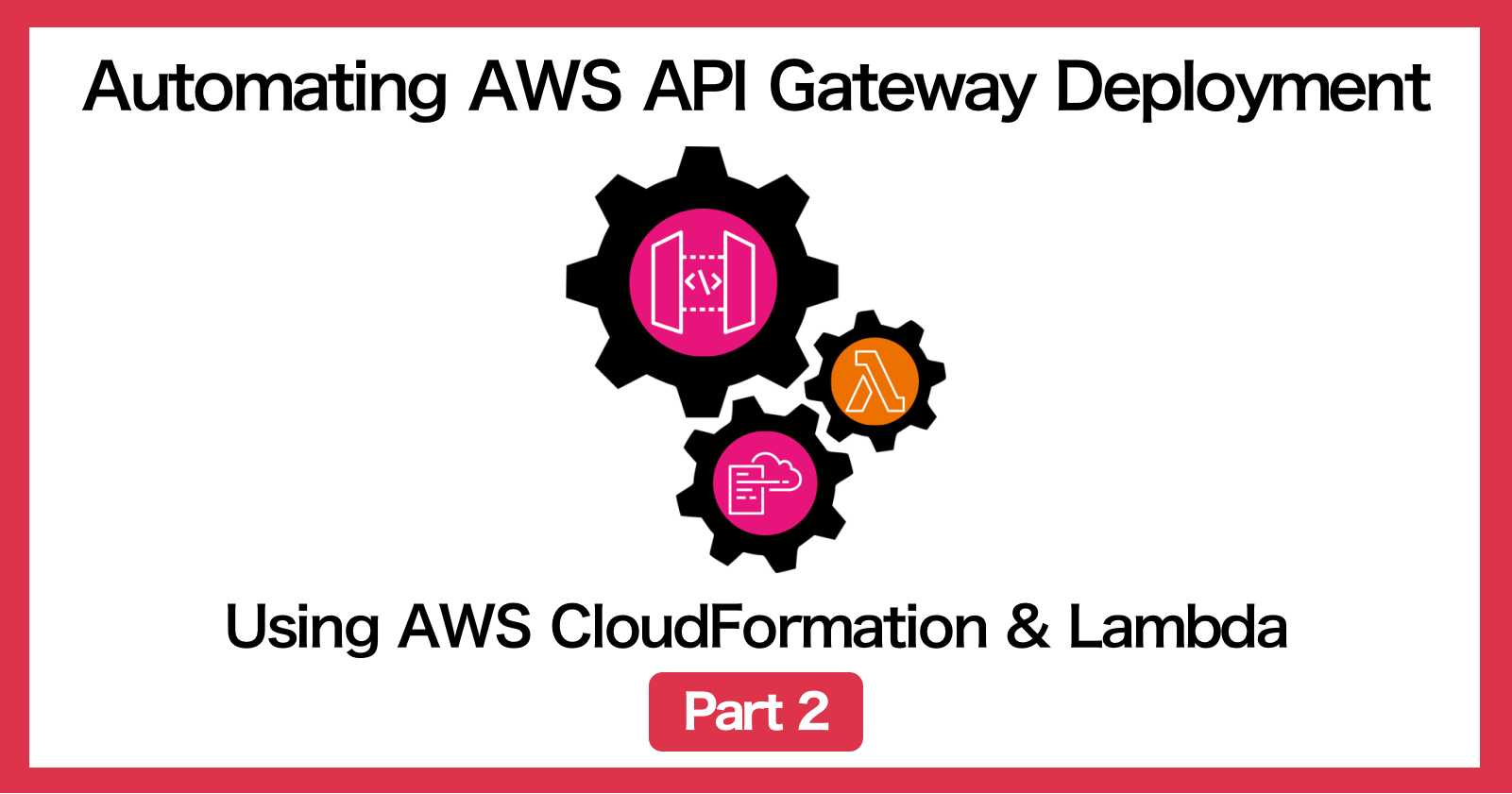Automating API deployment of API Gateway (Part 2)
 Bernice Choy
Bernice Choy
Previously...
In my previous article, I wanted to test if I can deploy API Gateway solely through CloudFormation.
While it seems possible, it will become increasingly difficult to maintain. This is due to the constant updating of CloudFormation stacks, by adding news resources differentiated with unique identifiers or timestamps. I share similar sentiments to what is discussed in this Stack Overflow post
Today's Objective
In this article, I will explore the steps required to programmatically provision an API Gateway and create deployments to it via awscli and shell scripting.
TL;DR
This article covers the list of
awsclicommands required to provision and deploy API to AWS API Gateway.
Note that
jqandawsclineed to be installed before running the commands below. You can save them into a script file to run them all at once.
#!/bin/bash
# Replace the filepath placeholder accordingly
export INITIAL_FILEPATH="fileb:///path/to/api.json"
export SUBSEQUENT_FILEPATH='fileb:///path/to/api-full.json'
export STAGE_NAME="dev"
# Provision API Gateway
## Store the response from creating REST API Gateway
APIGW=$(aws apigateway create-rest-api --name "My REST API" --description "APIGW created by AWSCLI" --endpoint-configuration types=REGIONAL)
## Parse and filter for the rest-api-id
export REST_API_ID=$(echo $APIGW | jq -r '.id')
## Upload JSON file for initial set of available API
### Required to put 'fileb://' + '/path/to/api.json', 3 slashes in front is as intended
aws apigateway put-rest-api --rest-api-id $REST_API_ID --body "$INITIAL_FILEPATH"
## Create 1st deployment & filter for the deployment id
FIRST_DEPLOYMENT_RESPONSE=$(aws apigateway create-deployment --rest-api-id $REST_API_ID --description 'First deployment to the dev stage')
DEPLOYMENT_ID=$(echo $FIRST_DEPLOYMENT_RESPONSE | jq -r '.id')
## Create new stage and push deployment
DEV_STAGE=$(aws apigateway create-stage --rest-api-id $REST_API_ID --stage-name "$STAGE_NAME" --deployment-id $DEPLOYMENT_ID)
# Subsequent Deployments
## Similar to step 3, upload API
aws apigateway put-rest-api --rest-api-id $REST_API_ID --body "$FILEPATH"
## Create a new deployment and push to existing stages
SECOND_DEPLOYMENT=$(aws apigateway create-deployment --rest-api-id $REST_API_ID --stage-name "$STAGE_NAME" --description "Second deployment to dev stage")
Walkthrough
1. Create API Gateway (APIGW)
A regional API Gateway will be created. A rest-api-id will be generated as the APIGW's identifier.
# Store the response from creating REST API Gateway
APIGW=$(aws apigateway create-rest-api --name "My REST API" --description "APIGW created by AWSCLI" --endpoint-configuration types=REGIONAL)
# Parse and filter for the rest-api-id
export REST_API_ID=$(echo $APIGW | jq -r '.id')
2. Check for existing deployments
The command below is used to check for all deployments for the target API Gateway. As the APIGW is new, there will be no deployments.
aws apigateway get-deployments --rest-api-id $REST_API_ID
# Ouput will be empty since it's a new API Gateway
{
"items": []
}
3. Provision Initial Resources
If
importis used, a new separate API Gateway default to Edge endpoint will be created instead.
By uploading methods in the form of a OpenSwagger API JSON file, it would be the equivalent of manually creating the resources in the APIGW.
# For convenience, the filepath to the API JSON file is stored into a variable
FILEPATH="fileb:///path/to/api.json"
# Required to put 'fileb://' + '/path/to/api.json', 3 slashes in front is as intended
aws apigateway put-rest-api --rest-api-id $REST_API_ID --body "$FILEPATH"
4. Create a new deployment
A JSON response will be returned along with the deployment ID to be deployed into a stage.
# Create the first deployment
FIRST_DEPLOYMENT_RESPONSE=$(aws apigateway create-deployment --rest-api-id $REST_API_ID --description 'First deployment to the dev stage')
# Sample JSON response
{
"id": "<SAMPLE_DEPLOYMENT_ID>",
"description": "First deployment to the dev stage",
"createdDate": "2022-07-31T14:57:16+08:00"
}
# Filter for deployment ID
DEPLOYMENT_ID=$(echo $FIRST_DEPLOYMENT_RESPONSE | jq -r '.id')
5. Create a new stage for the first deployment.
Upon deploying the deployment into the stage, the APIGW will receive the latest changes to the API.
export STAGE_NAME="dev"
DEV_STAGE=$(aws apigateway create-stage --rest-api-id $REST_API_ID --stage-name "$STAGE_NAME" --deployment-id $DEPLOYMENT_ID)
# Sample JSON Response
{
"deploymentId": "<DEPLOYMENT_ID>",
"stageName": "dev",
"cacheClusterEnabled": false,
"cacheClusterStatus": "NOT_AVAILABLE",
"methodSettings": {},
"tracingEnabled": false,
"createdDate": "2022-07-31T15:07:06+08:00",
"lastUpdatedDate": "2022-07-31T15:07:06+08:00"
}
6. Subsequent deployment
Upload a subsequent required new OpenSwagger JSON file into a variable for the next deployment
FILEPATH='fileb:///path/to/api-full.json'
# Similar to step 3, upload API
aws apigateway put-rest-api --rest-api-id $REST_API_ID --body "$FILEPATH"
# Create a new deployment
SECOND_DEPLOYMENT=$(aws apigateway create-deployment --rest-api-id $REST_API_ID --stage-name "$STAGE_NAME" --description "Second deployment to dev stage")
Conclusion
By trying out the commands, I believe I will be able to create a Lambda-backed custom resource for automating the API Gateway deployment within CloudFormation stack.
Keep a look out for that! Cheers

Subscribe to my newsletter
Read articles from Bernice Choy directly inside your inbox. Subscribe to the newsletter, and don't miss out.
Written by

Bernice Choy
Bernice Choy
A fledgling engineer dabbling into areas of DevOps, AWS and automation. I enjoy tinkering with technology frameworks and tools to understand and gain visibility in the underlying mechanisms of the "magic" in them. In the progress of accumulating nuggets of wisdom in the different software engineering disciplines!